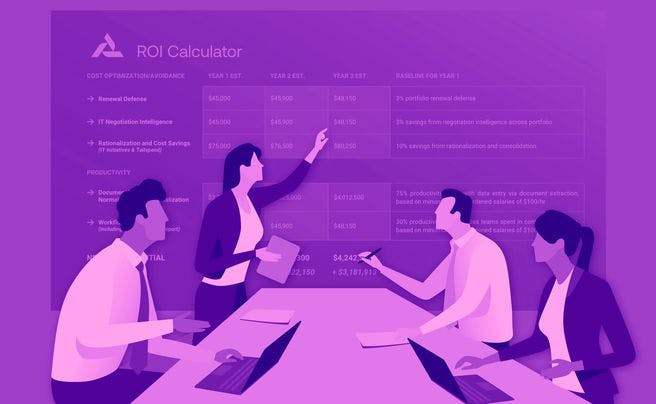The More Technology Changes, the More Some Things Stay the Same
Information Technology and innovation are some of the greatest driving forces in business today. CIOs must work tirelessly to stay current on new trends and translate them into opportunities for their enterprises. In this environment, technology is the ‘what’. I want to discuss the ‘how’. Based on my experience, the delivery of technology may be accelerating change in the enterprise, but how it is managed has not changed along with it.
The Beginning of Vendor Management Organizations (VMOs)
During my 40-year career with General Electric and UPS, I worked across half a dozen business units including energy, aviation, motors, consulting, turbine and shipping logistics businesses. During this time I experienced the evolution of outside resourcing, as a major component of IT sourcing in the 1980s, which led to the creation of the Vendor Management Organization (“VMO”). At both of these companies, the VMO managed some of the largest third party vendor programs in the world. GE and UPS are very different businesses with very different IT objectives, but the scope and function of the VMO at each is very much the same.
It’s not reasonable to think that IT organizations have the internal ability to develop expertise in all the changing technologies of the day. Implementation, integration, and utilization of software and services all present vendor management challenges even before new products begin benefiting the enterprise. Enterprise ROI from IT programs is highly dependent on implementation and training, which are both cost drivers. External IT Services programs must be fully aligned and fully integrated to realize ROI on most large-scale IT projects.
What Defines a Fully Integrated, High-Performing VMO?
The goal is to provide a function that harmonizes the goals of IT procurement, IT asset management, IT budgeting and third party risk management. The principles that underpin VMO success have always been careful contract negotiation and tracking, understanding key people on both sides of the relationship and cross-functional collaboration internally and externally. These key practices — when implemented properly — can drive outsized business results.
The functional scope of IT VMOs may not be defined the same across different enterprises. They may go by a different name as well. Fundamentally, however, their purpose is to provide a means for the business to efficiently engage with external companies and resources to facilitate IT solutions aligned with enterprise objectives. They’re tasked with knowing who to go with, where to go, how to source, what to pay, and setting expectations for fulfillment. That blueprint has not changed
Within VMO scope are basic components of leveraged spend, relationship building, value-add extraction, procedure development, process enforcement, spend control, and compliance alignment to name a few. These building blocks of a fully integrated VMO organization have not changed over time. The latest and greatest technologies like AI, VR, ML, Cloud, IOT, and RPA may change the vendors you work with, the skills you require, and the models you employ, but the function of building an environment that builds relationships, qualifies and quantifies the vendor slates, measures what needs to be measured, and aligns with the speed of technology is still a VMO’s primary focus.
VMO Changes and Certainties
I’m often asked, “how are VMOs changing with technology?” Most are surprised when I explain that they aren’t changing much. The current state of stagnation has two parts:
Stale approaches to vendor management are a symptom of poor leadership or a failure to recognize the value that world-class vendor management can deliver.
The reality is that vendor management hasn’t been targeted as a major area for technology investment. This combination of forces has perhaps contributed to the dearth of platforms available in the IT space targeting better vendor management.
When I perform VMO assessments, I usually find that key building blocks are non-existent, outdated, or out of focus. Companies over-rely on general purpose tools like spreadsheets, email and shared drives. This impedes process innovation and slows important work. In addition to inadequate tools and imperfect processes, the VMO roles themselves aren’t always filled with the proper skills. Lastly, it’s common to find poor alignment between the VMO and the wider organization. These challenges lead some to believe VMOs are not able to keep up with technology and increasingly demanding challenges with IT and IT Services sourcing and management. I don’t believe this to be the case.
In the absence of a VMO, some of the deficiencies listed above may be executed in a Program Management Office or spread across business functions originating the projects out of sheer necessity. While some aspects of the ‘vendor management’ function may be partially covered with this patchwork structure, it rarely provides an enterprise view of the external resourcing environment, thereby diminishing overall effectiveness.
Final Thoughts
The greatest challenges facing VMOs today have existed for years. My position is that the scope and fundamental existence of VMOs is not changing. However, increasing organizational awareness and investing in capabilities to maximize strategic vendor relationships is critical to the success of IT organizations.
Information Technology will continue to evolve — possibly at an increasing rate. VMOs must align with IT’s direction so they can ensure a qualified platform for sourcing to satisfy the emerging needs of the enterprise. While new centralization technology may enhance aspects of vendor and supplier management, the foundational aspects of the IT VMO function have been in place for years.




